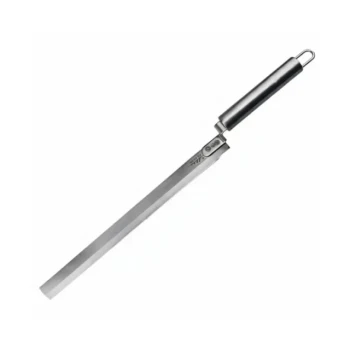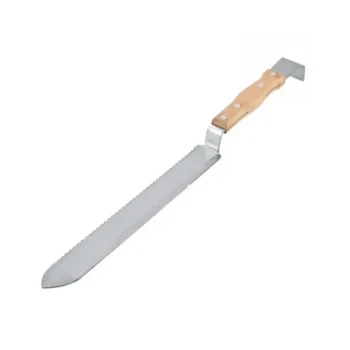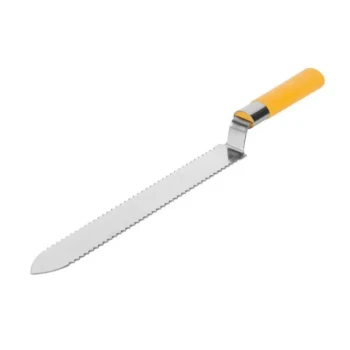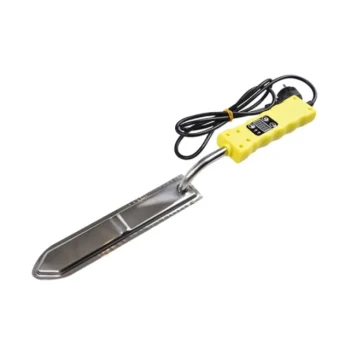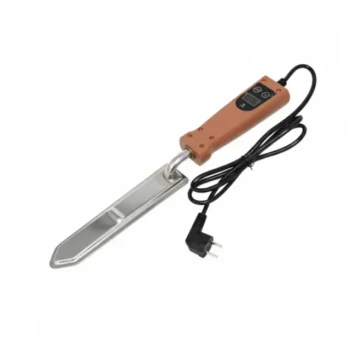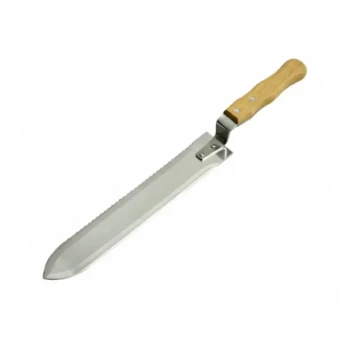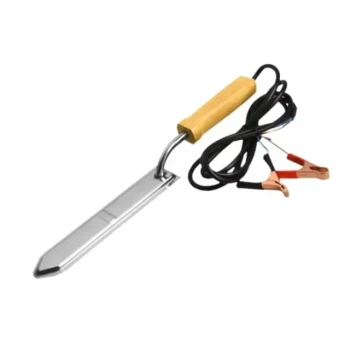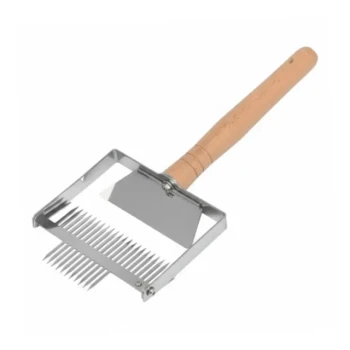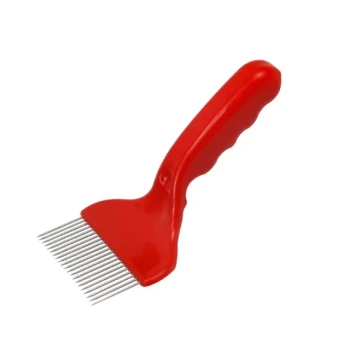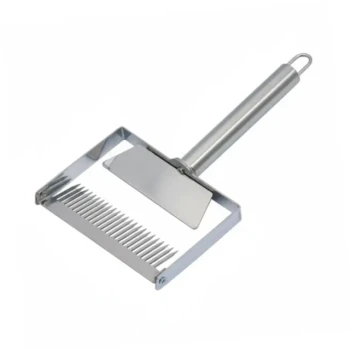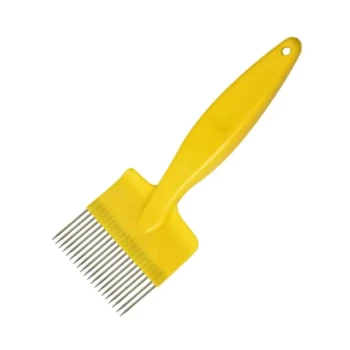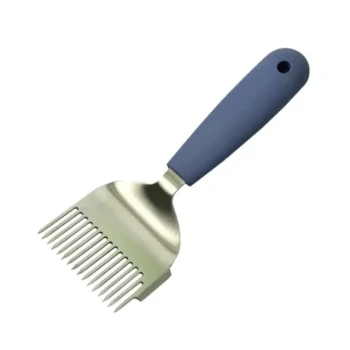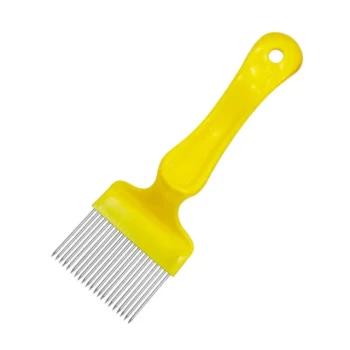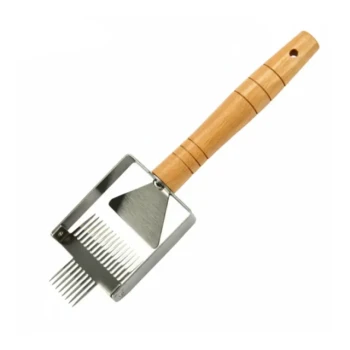At its core, an uncapping knife is a specialized tool used by beekeepers to slice the thin wax layer, or "cappings," off a frame of honeycomb. This essential step exposes the honey within the comb's cells, preparing it for extraction. The knives are designed to make a clean cut without damaging the underlying honeycomb structure.
The fundamental choice you face is not simply what an uncapping knife is, but which type best suits your scale of beekeeping. The decision boils down to a trade-off between the low cost and simplicity of a manual knife versus the speed and efficiency of an electric one.
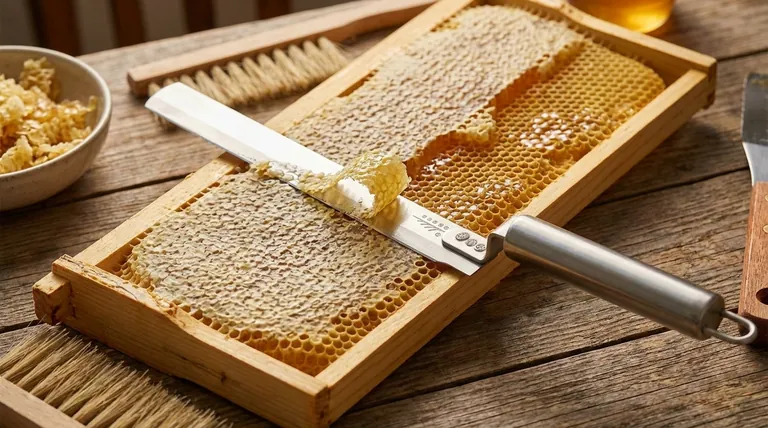
The Core Function: Preparing for Extraction
To extract liquid honey, you must first remove the protective wax seal that bees build over each filled cell. An uncapping knife is the primary tool designed specifically for this purpose.
Why Uncapping is Necessary
Bees cap their honey with fresh beeswax to preserve it and control its moisture content. This cap must be removed before the frames can be placed in a honey extractor, which uses centrifugal force to spin the honey out of the cells.
The Goal of a Clean Cut
The ideal uncapping process removes only the top layer of wax cappings. A clean, shallow cut preserves the integrity of the honeycomb, allowing the bees to repair and reuse it, saving them a tremendous amount of energy.
Types of Uncapping Knives
While all uncapping knives serve the same purpose, they operate on different principles. The main distinction is how they use heat—or if they use it at all.
The Manual "Cold" Knife
A manual knife, often called a "cold" knife, is the simplest version. It typically has a long, sharp, and sometimes serrated blade with a wooden handle for a secure grip.
This tool relies purely on a sharp edge and the beekeeper's technique to slice through the wax. While effective, it can require more physical effort.
The Hot Water Knife
Any manual knife can be used as a "hot" knife. By dipping the blade in very hot water, the metal heats up, allowing it to melt through the wax cappings with much less resistance.
This method significantly speeds up the process compared to a cold knife. Beekeepers often use two knives, keeping one in hot water while the other is in use.
The Electric Knife
An electric uncapping knife has a built-in heating element that keeps the blade at a constant, optimal temperature. This eliminates the need for a separate heat source like a pot of water.
These knives are prized for their high efficiency and speed, making them a popular choice for beekeepers who process more than a few hives' worth of honey.
Understanding the Trade-offs
Choosing the right tool requires balancing your budget, the size of your operation, and your desire for convenience.
Manual Knives: Cost vs. Effort
The primary advantage of a manual knife is its low cost and simplicity. It requires no power source and is easy to clean and maintain.
The downside is that it is the slowest method and can be physically tiring, especially when used "cold" on a large number of frames.
Electric Knives: Speed vs. Investment
An electric knife is a significant investment but pays dividends in time and effort saved. It provides a smooth, fast cut that makes the uncapping process much more efficient.
However, it is more expensive, requires a power source near your processing area, and introduces a component that can potentially fail.
Key Design Features to Consider
Regardless of type, look for a blade made of stainless steel, which is corrosion-resistant and won't affect the honey's flavor. A "Z-shape" or offset handle can also provide better ergonomics and control during the cut.
Making the Right Choice for Your Apiary
Your goal should be to match the tool to the task at hand.
- If you are a new hobbyist with 1-3 hives: A simple manual knife is a perfect and cost-effective starting point.
- If you want a performance boost without electricity: Using two manual knives rotated in a pot of hot water offers a significant upgrade over a single cold knife.
- If you prioritize speed and process a larger number of frames: An electric uncapping knife is a worthwhile investment that will save you significant time and effort during the harvest.
Selecting the right tool simplifies your harvest and lets you focus on the reward of your work.
Summary Table:
| Type | Key Feature | Best For |
|---|---|---|
| Manual Knife | Low cost, simple | Hobbyists with 1-3 hives |
| Hot Water Knife | Faster than manual, no electricity needed | Beekeepers wanting a performance boost |
| Electric Knife | High speed and efficiency | Larger operations processing many frames |
Simplify Your Honey Harvest with HONESTBEE
Choosing the right uncapping knife is crucial for an efficient harvest. As a trusted supplier of beekeeping supplies and equipment for commercial apiaries and distributors, HONESTBEE provides the durable, high-performance tools you need. Our range of stainless steel uncapping knives, from reliable manual models to time-saving electric versions, is designed to withstand the demands of a commercial operation.
Let us equip your apiary for success. Contact HONESTBEE today to discuss your wholesale needs and discover how our equipment can enhance your productivity and profitability.
Visual Guide
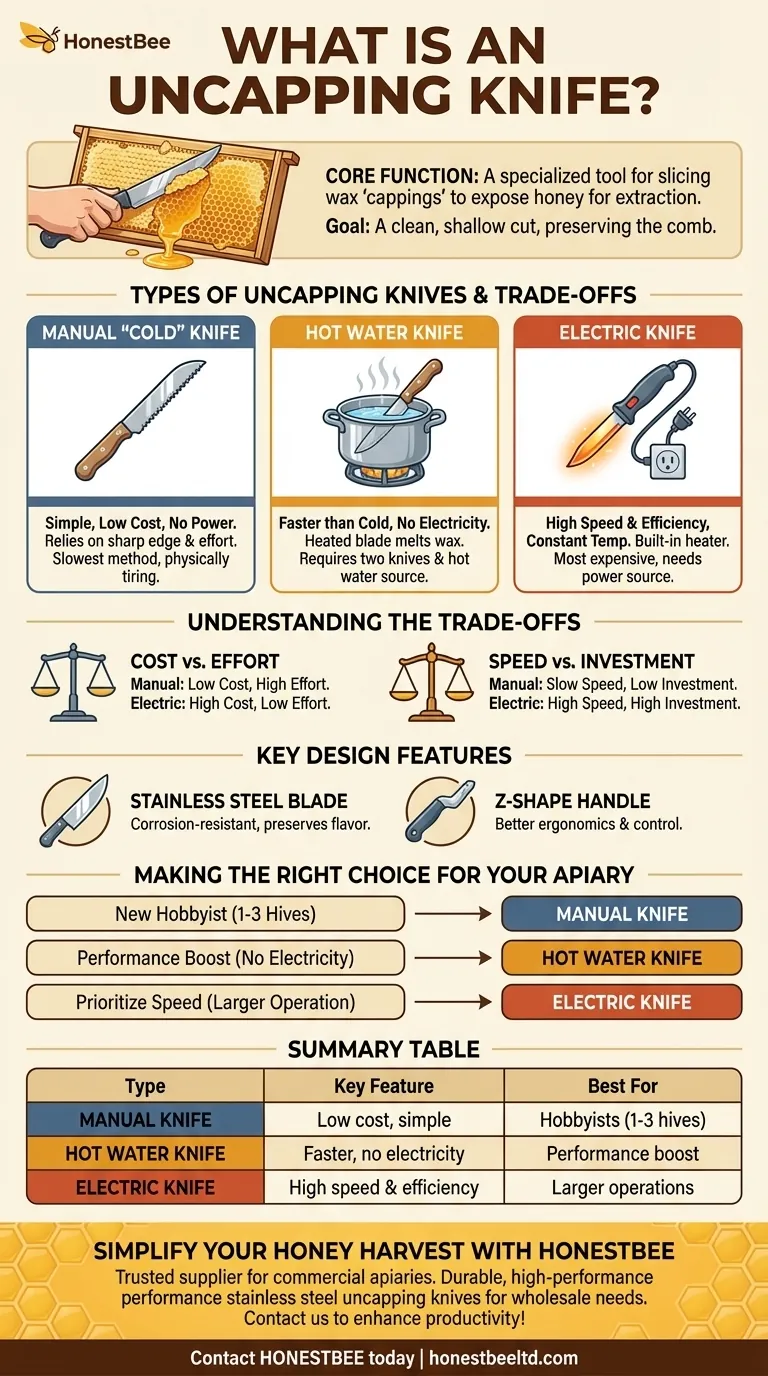
Related Products
- Professional All-Stainless Steel Uncapping Knife for Beekeeping
- Professional Z-Shaped Multi-Function Uncapping Knife for Beekeeping
- Professional Serrated Double-Sided Uncapping Knife for Beekeeping
- Serrated Honey Uncapping Knife for Beekeeping and Bee Hive Maintenance
- Electric Heated Honey Uncapping Knife for Beekeeping
People Also Ask
- What is the use of an uncapping knife? Essential for a Clean & Efficient Honey Harvest
- What are the advantages of using an electric uncapping knife? Maximize Honey Harvesting Efficiency
- What temperature should a honey knife be? The Key to Clean, Fast Uncapping
- How to clean an uncapping knife? Master the Hot-Knife Method for Easy Maintenance
- What is the purpose of comparing the hot knife and heat gun methods for uncapping honey frames?
